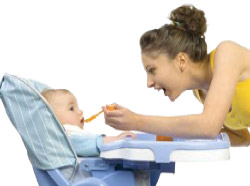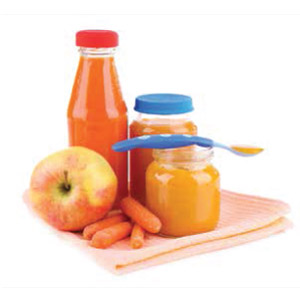Breast milk provides all the essential nutrients in the right amounts until your baby is about six months old. As your baby continues to grow and becomes more active, his nutrient needs increases and breast milk alone will not be sufficient to support his optimal growth and health development. This will be the best time to start complementary feeding, which is the process of adding solid foods to your baby’s total milkbased diet.
Timing complementary feeding
A baby is usually ready for solid foods by the time he reaches 6 months of age. This transition, from an all- milk diet to that with added solids, is a vulnerable period in a baby’s life. Starting on complementary feeding too late may cause nutrient deficiencies, possibly affecting the growth and development of a baby both mentally and physically. However, start too early and he may not be able to cope, as a baby’s digestive system is immature and needs time to develop well.
Is your baby ready for solid foods?
Here are some tell-tale complementary feeding signs:
- Baby cries for more even after a full milk feed.
- Turns irritable and impatient till the next feed.
- Starts being more active – pushing away from the floor with his chest, practising to sit up.
- May start waking up at night for another feed.
- Puts objects into the mouth and tries to chew.
- Makes “munching” motions even when there is nothing in the mouth.
At four months, your baby may have a bigger appetite; do not confuse this with the real signs of complementary feeding as many babies go through a growth spurt causing them to be hungrier than usual!
Feeding baby more
As baby shows the signs mentioned above, you could begin complementary feeding by starting on foods that are gentle in flavour and smooth in texture. Many mothers like to start with baby rice cereal, mixed with some breast milk. This helps babies get used to a new texture that has a familiar taste. You can then start introducing other foods such as pureed bananas, mangoes, sweet potatoes, carrots and pumpkins. When introducing solid foods to your baby, do not add salt or sugar.
CAUTION!
Introduce one type of food at a time instead of blending a few different types of food together. This makes it easier to detect if your baby is allergic to any one type of food.
Variety is the spice of life!
As your baby grows, the textures of foods given should vary, from purees to chunkier textures and finally small pieces of chopped meat or vegetables. Introducing new tastes and textures will also help develop your baby’s swallowing and chewing skills.
It is also important to offer your baby a wide range of different foods in his diet as he grows older. This includes red meat, poultry, fish, various fruits and vegetables as well as dairy, cereals, rice, pasta and potatoes. Once he reaches his first birthday, you can give your baby regular family foods. This will help give him a wide variety to his preferences, and avoid him becoming a picky eater in the future!
Keep milk in the loop
Although you have started feeding your baby solid foods, milk remains an essential part of his diet. It is the fastest and easiest way of ensuring that he receives all the nutrients he needs, especially when he has just begun complementary feeding. Furthermore, the World Health Organization (WHO) encourages breastfeeding until children are two years old in order to receive maximum benefits from breast milk.
Complementary feeding is not something that can be done in a hurry. In fact, a lot of time and effort is needed in this transition from just milk to accommodating solids in his diet. The most important thing is – do not give up if he pushes the food away but to keep trying till your baby gets used to the different textures and tastes of foods.







Comments